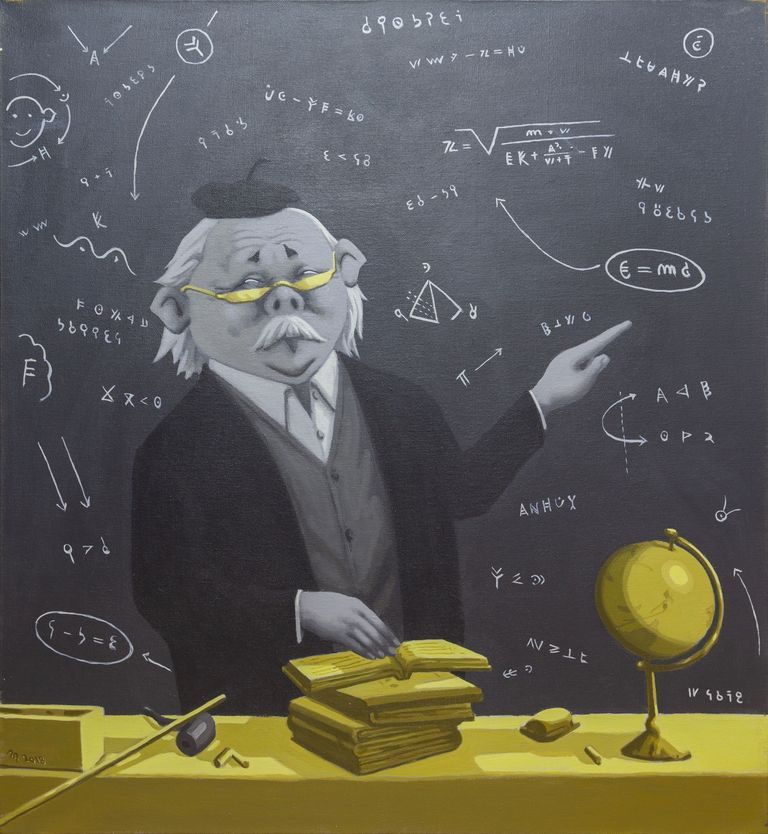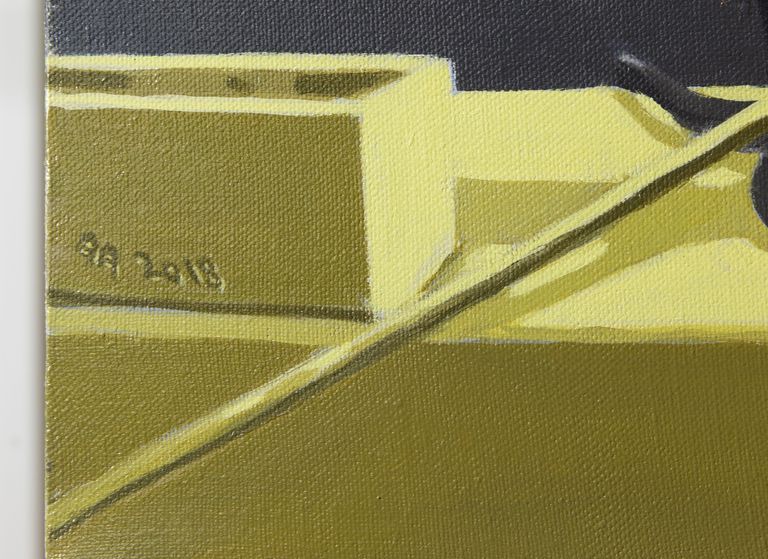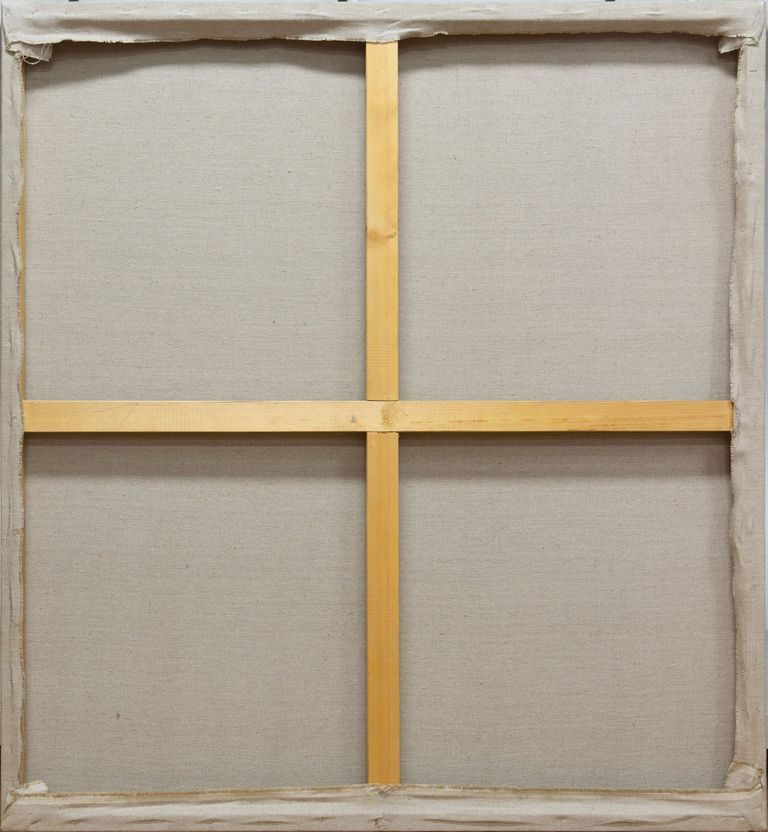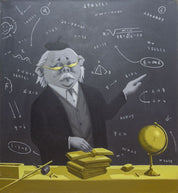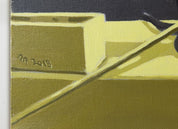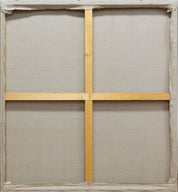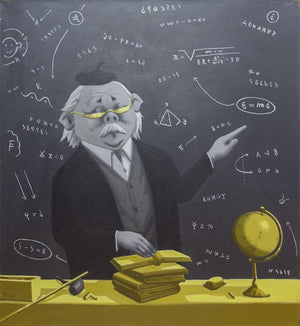History of Scientific Cognition
Li Dapeng
Artwork Details
Artwork Description
Title: History of Scientific Cognition
Artist: Li Dapeng
Date: 2018
Medium: Oil on canvas
Dimensions: 125 x 115 cm (49.2 x 45.3 in)
1. Artwork Identification
Li Dapeng’s History of Scientific Cognition presents a whimsical yet profound visual narrative of science and learning. The painting features a rotund, anthropomorphic pig-like figure styled as a stereotypical professor, gesturing toward a chalkboard brimming with scientific formulas and symbols. Rendered in muted greys and yellows, the composition humorously blends academic iconography with cartoonish surrealism.
2. Artistic Style and Influences
Working in a stylized realist manner with satirical undertones, Li Dapeng merges the language of figuration and symbolism with caricature. His use of anthropomorphism and exaggerated features draws influence from European cartoon tradition while maintaining a Chinese sensibility in palette control and compositional clarity. The use of parody—particularly in the pig-headed scholar—critiques and celebrates intellectual history simultaneously.
3. Historical Context
Created in 2018, the painting reflects contemporary Chinese artists’ engagement with themes of knowledge, power, and absurdity in the age of information overload. The central figure's pig-headedness may serve as commentary on blind reverence for intellectual figures or institutionalized science, while the chaotic blackboard evokes the complexity and, at times, the inaccessibility of academic knowledge systems.
4. Provenance
Provenance documentation can be provided upon contact.
5. Condition and Conservation
The artwork is in very good condition. The canvas surface is stable with no evidence of flaking or discoloration. Colors remain vibrant, and the paint layer is intact and well-preserved.
6. Artistic Significance
History of Scientific Cognition stands as a playful yet pointed meditation on the pursuit of knowledge. By anthropomorphizing a scientific authority figure, Li Dapeng invites the viewer to question the seriousness and absurdity embedded within scholarly traditions. This piece exemplifies the artist’s ability to blend humor and critique with painterly precision, contributing to the broader dialogue on knowledge systems and cultural identity in the postmodern era.

